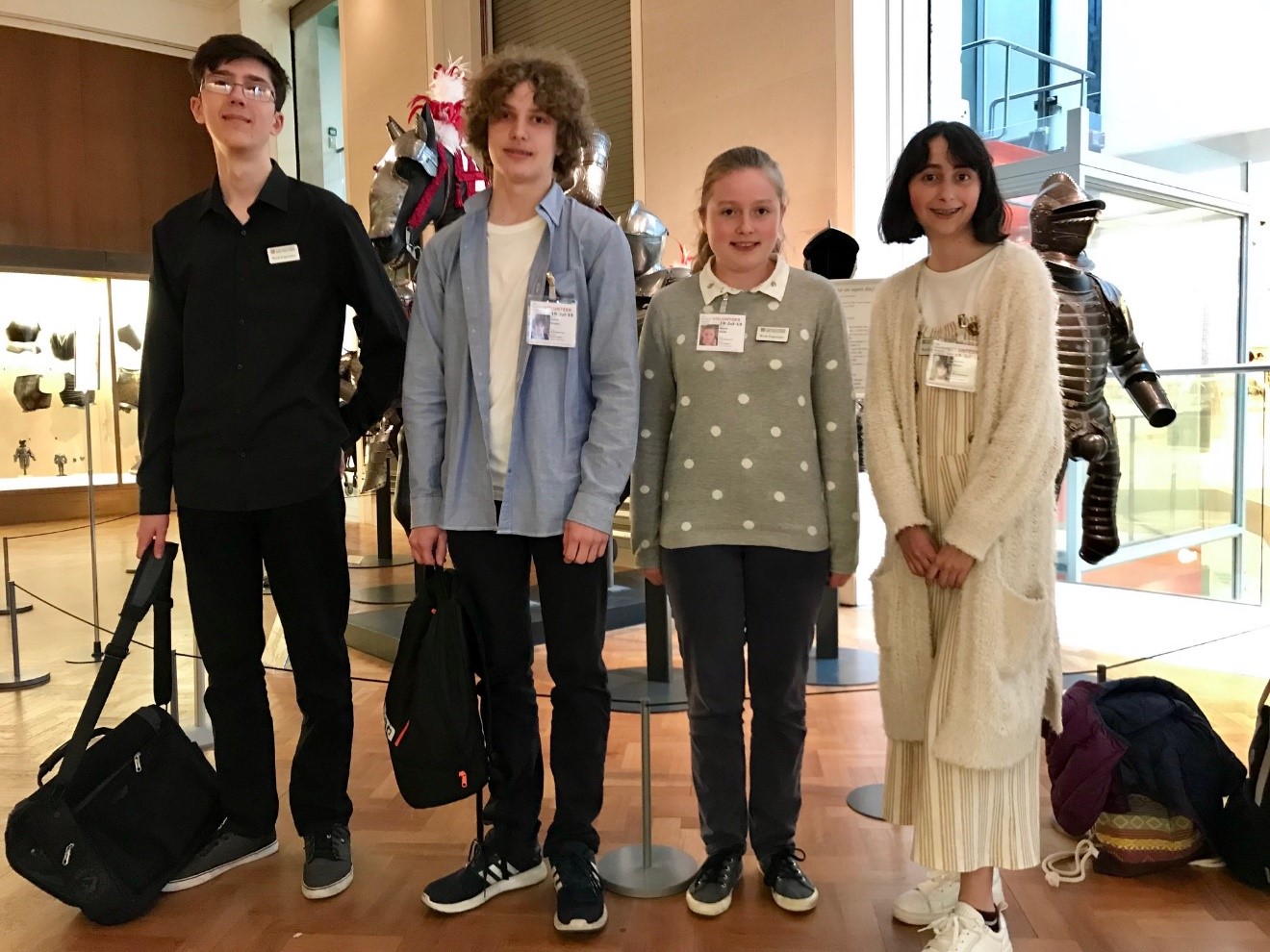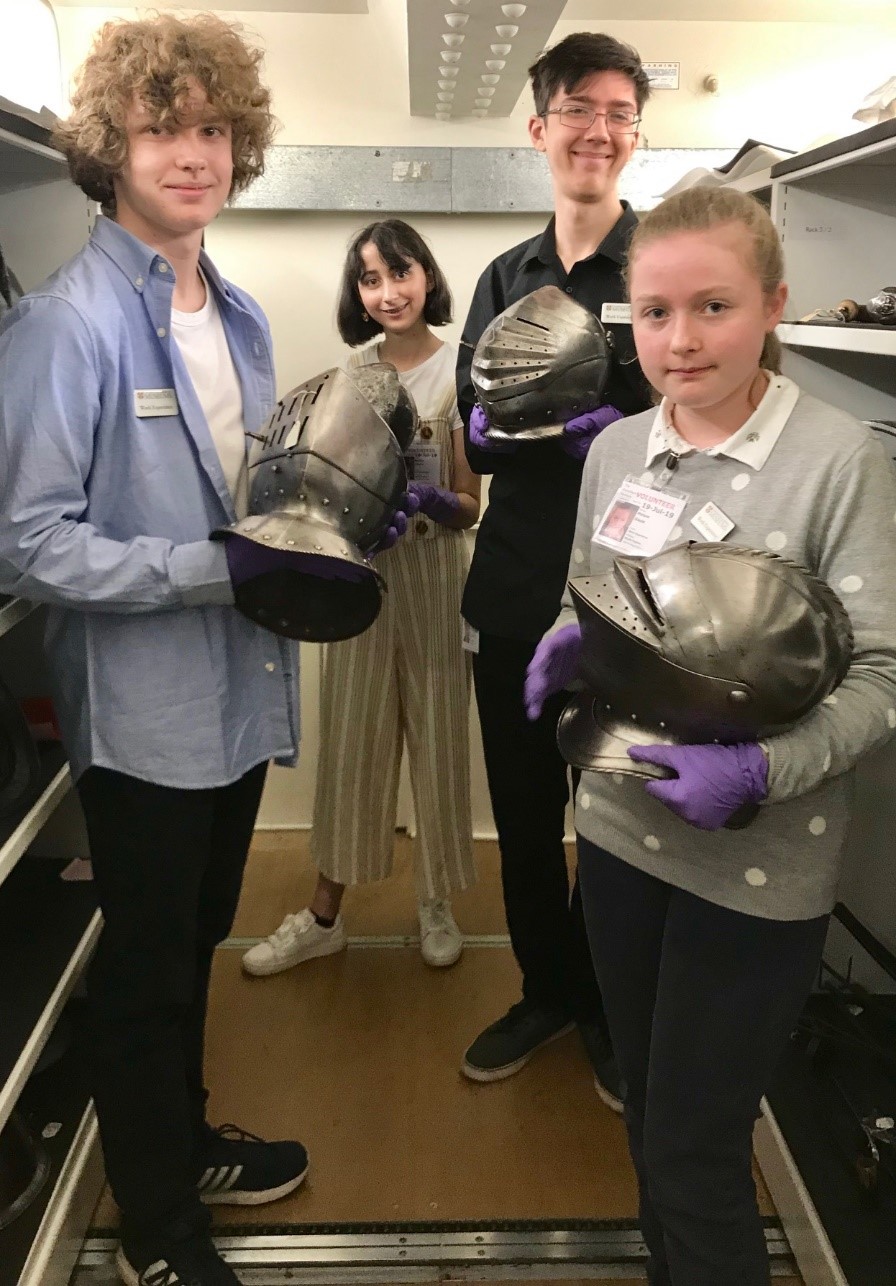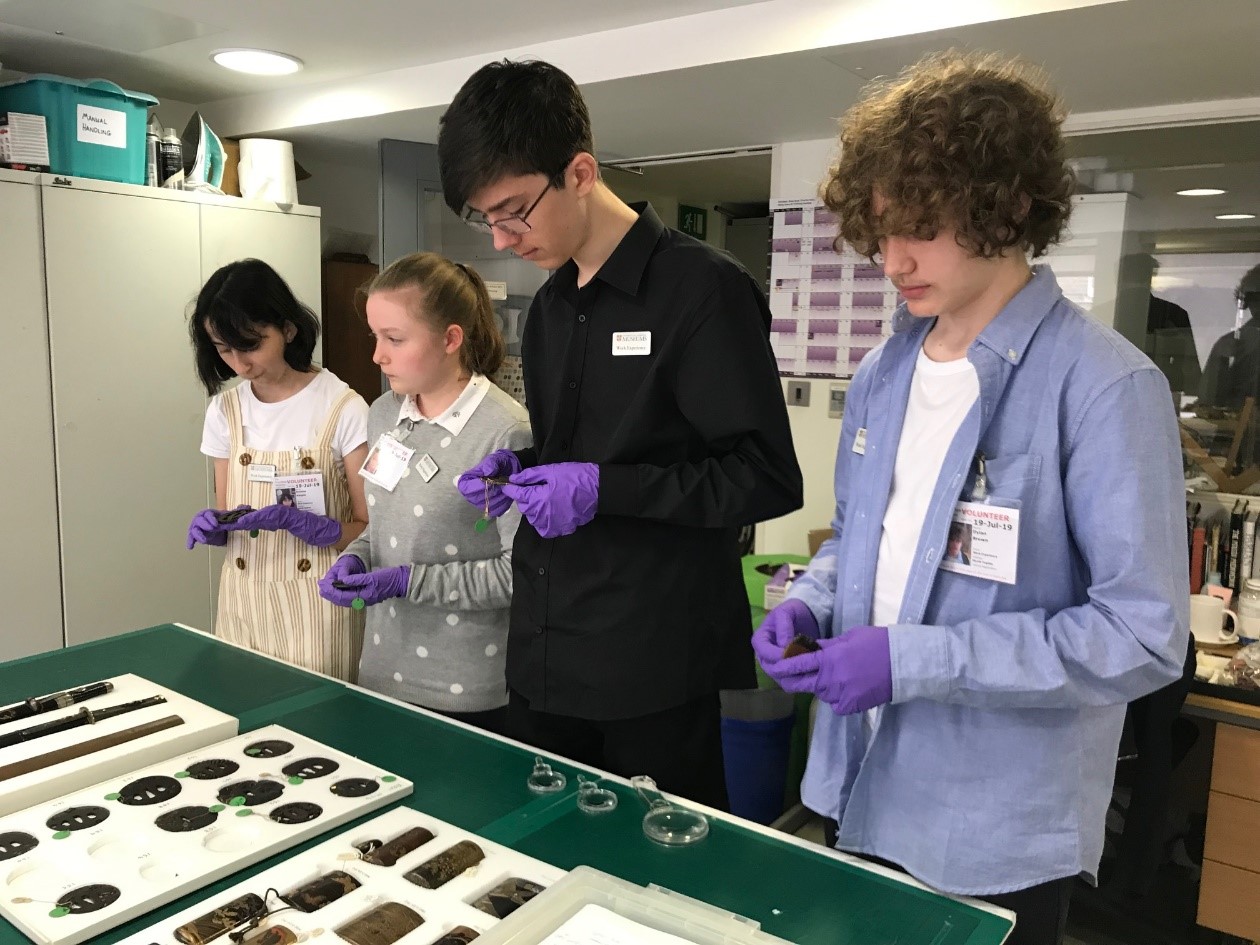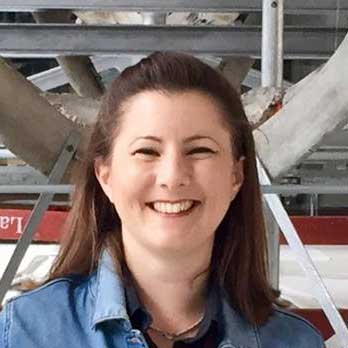The fourth and final week of the UCM Work Experience programme saw students from Bottisham Village College, Trumpington Community College, Arden Academy and Cambourne Village College carrying out placements at the Fitzwilliam Museum, Kettle’s Yard and the Museum of Classical Archaeology.

Why did you want to do work experience with the University of Cambridge Museums?
I had already attended a taster day for the work experience week at the Fitzwilliam Museum previously and was very pleased with what it entailed and the type of work and jobs at the museum we would be able to talk about and learn about in-depth. I was not previously interested in working at a museum before the taster day, but following its completion I realised there was more involved in the running of a museum than I had originally thought and I was keen to learn more about it through the full work experience week. Furthermore, as a student studying history, I figured that the work experience week may bring me closer to the objects within the museum that interested me and allow me to find out the range of history that people work with within museums and how hands-on their work is with objects and pieces. Aside from this, I was simply interested in what kind of jobs were available to those working within museums and the range of work involved that I could possibly look at involving myself in within the near future and even more so how one might begin a career in museum work: as I was fairly unsure of the process involved in getting work within a museum full-time aside from Front-of-House. Harrison

What has surprised you about working at the museums?
There were many things that surprised me when working at the Fitzwilliam Museum, the main thing being just how much goes on behind the scenes at the museum without the visitors or public knowing. An example of this being the work that takes place in the conservation department. They rebind damaged manuscripts and printed books, as well as repair the pages with special Japanese paper if they have been damaged by bookworms or other insects so that they can be displayed to the public. Something else that surprised me was the way in which museums have to consider events. There are certain foods and drinks that cannot be consumed inside the museum, these include beetroot and red wine due to the red pigment in them which would damage paintings and objects. Museums also have to consider the music at the events: they cannot play music with bass due to the vibrations which could cause damage to surrounding objects. Dylan

What was your favourite part of the week?
My favourite part of the week was looking at all the conservation work that the team has to carry out in order to maintain the artefacts in the museum, and to prevent or fix damage on the pieces, although I’m sure the boys would argue that it was the session in applied arts, since they got to hold ancient swords. I found it really interesting learning about all the different techniques used for this, ranging from working in and displaying the art in ways based on certain environmental factors, such as temperature, humidity and light intensity, to general upkeep and repairs to artefacts.
This was spread across multiple sessions, the first being preventative conservation, where we learned about pests that destroy artefacts and how to deal with them, as well as looking at how environmental factors will effect artwork as temperature and moister causes wood and panel to expand, and light causes pigmentation in the paintings and coloured artefacts to fade.
The second session was about manuscripts and printed books. We were taught about different manuscripts, and how they were bound and re-bounded through the ages, and the different ways you can fix damage to books and manuscripts, primarily using Japanese paper tissue, a thin, light and strong paper made of vegetable fibres.
Finally, we had a session on paintings, drawings and prints, looking at how they are framed and the importance of maintaining these frames. Many of the frames are made on site, and we then had the opportunity to practice framing some postcards, with frames that the team kindly made for us.
Overall this has been a really enjoyable experience and I would love to come back and volunteer at the museum. Kaisha
Why should other students take part in work experience at the University of Cambridge Museums?
If you have any interest, big or small, in museums you should definitely consider applying to take part in the University of Cambridge Museums work experience scheme. I had so many different opportunities laid out before me that I never would have tried if I hadn’t applied for the placement. I saw and handled artefacts from hundreds of years ago, that aren’t available for the public to see: medieval swords, Beethoven’s pocket watch and a lock of King Charles I’s hair, which George IV cut and presented to the Duke of Cumberland in 1813 (to name a few!). The week is spread over two museums, the Fitzwilliam and a second – for me, the Museum of Classical Archaeology. I was struck by the variations between a large and smaller scale museum and how they are run.
I had no idea of how many people and how much effort goes into making a museum function. I met a number of amazing people, who explained how they go about conserving the objects, from making frames for works to manuscript preservation and repair, to protecting artefacts from possible infestation.
I felt very welcome in the group. I was always given the chance to speak and contribute, which helped my confidence, as I wouldn’t usually participate in group discussions, even when I know an answer. By the end of the week I felt able to stand in front of a group of people (along with the others on the scheme) and present how we felt about “interpretations” in the museum. My experience also helped me to become more independent as I had to catch the bus everyday by myself, into the city. I had not done this before. Thanks to this work experience I would seriously consider volunteering in the museums, and employment possibilities or an apprenticeship. Maisie







